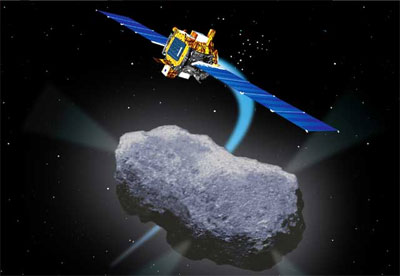The critical role of advanced technology investments in preventing spaceflight program cost overrunsby John C. Mankins
|
| The idea is simple: it is much cheaper to invest in technology development and mission analysis/system design studies before beginning development, than it is to fix the engineering problems that will inevitably arise once less well-prepared projects get started. |
Alan Stern suggested four important steps. First, that “the new presidential administration could begin by accounting for cost increases more honestly, using the initial basis on which missions are started, rather than today’s practice of neglecting certain kinds of cost escalation.” Second, “scientists and engineers should be required, when formulating missions, to ensure their scope matches their budget.” Third, “NASA should be charged to reduce or cancel development projects that are not performing to cost.” And, finally, “Congress should turn from the self-serving protection of local NASA jobs to an ethic of responsible government that delivers results.”
Unfortunately, all of these necessary and useful recommendations have to do with dealing with the “cancer” (as Dr. Stern described the problem of space program cost overruns) only after it has taken root. A much more useful approach would be to deal with the problem before becomes a “cancer”.
There is extremely good evidence from numerous past space programs that a key source of development cost overruns can in many cases be found in a failure to make adequate investments in mission/system concept studies and technology research & development before finalizing a mission design and submitting its cost estimate to the White House and Congress.
The Government Accountability Office (GAO) has highlighted this issue repeatedly in recent years, referring to the preferred best practice as “Knowledge-Based Program/Project Management”. GAO has urged that all major space program decisions be based on knowledge: knowledge derived from detailed and independently-reviewed analyses and design studies, and knowledge gained from actual research, development, and demonstration of the key technologies needed to enable a particular space system and/or mission approach.
The idea is simple: it is much cheaper to invest in technology development and mission analysis/system design studies before beginning development, than it is to fix the engineering problems that will inevitably arise once less well-prepared projects get started. In other words: of course, do things right, but first figure out the right things to do. Early and adequately funded investments in the study of alternatives and the maturation of competing technologies can improve the quality of management decisions about what systems to develop, and the accuracy of estimates of how much it will cost and how long it will take.
There are strong statistics in support of this argument. In the mid-1980s, NASA’s budget office found that during the first 30 years of the civil space program, no project enjoyed less than a 40% cost overrun unless it was preceded by an investment in studies and technology of at least 5Ð10% of the actual project budget that eventually occurred. The opposite can also be seen easily: in cases where studies of alternative concepts have been well funded, and new technologies have been rigorously developed and matured, the risk of overruns is much, much lower. These investments must take place beginning before “Phase A” (system/mission definition) and continue through “Phase B” (system design) completion. If this practice is followed, the NASA statistics indicate that even if there is an overrun, the problem tends to be much lower than if a strong investment in studies and technology R&D has not been made. The GAO has found very similar results with various DOD programs.
At NASA, the relevant question is often: what is the technology readiness level (TRL) for a new system development? This is a question that should be answered before development is allowed to proceed past pre-Phase A, Phase A, or Phase B. Unfortunately, the rules are in place to ask the question, but the budgets needed to achieve an adequate level of technology maturity are not available. The US investment in advanced space technology R&D has been viewed by recent leadership as a “perk” for researchers: an unaffordable luxury in a time of tight budgets rather than as a crucial precursor to keeping future project budgets within scope and milestones on schedule. Within NASA, this critical investment in new technology has been slashed to the bone in recent years: cut deliberately to the lowest levels since the early 1960s in an unsuccessful attempt to accelerate the initial operational date of the post-Space Shuttle US crew launch capability. If this situation remains uncorrected, our goals for civil space must be become much more constrained, or future budget overruns will become much worse.
| We need to do things right, of course; but, we must also do the right things. |
Americans are both visionary and hard-nosed. Of course we want a civil space program that accomplishes great things—that reaches for meaningful and ambitious goals, that inspires through achievements no less than sublime, and that makes a real contribution to our quality of life. If not, why even have a civil space program? However, Americans also demand civil space programs and projects that are accomplished on schedule and within budget. If not, in these difficult times, why throw good money after bad?
In addition to the important steps recommended by Alan Stern in his recent New York Times op-ed, I would further urge that the new administration look carefully at strengthening the nation’s space technology R&D portfolio—not only to increase our options for the future and yield numerous benefits for the public, but also to improve program and project implementation performance within NASA and across the government. We need to do things right, of course; but, we must also do the right things.
